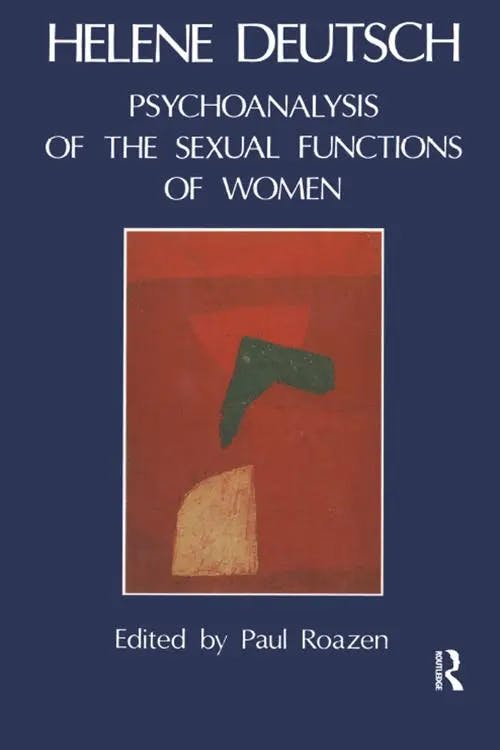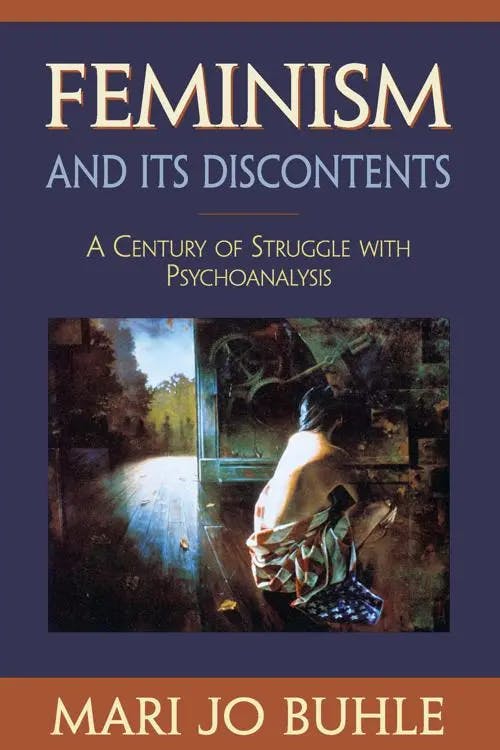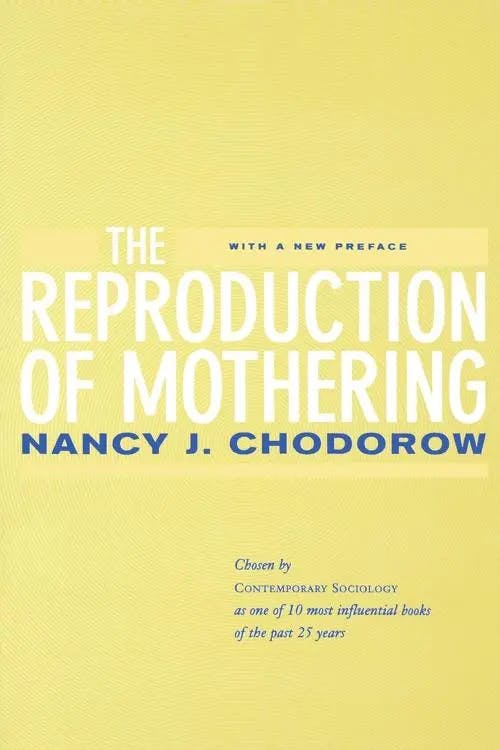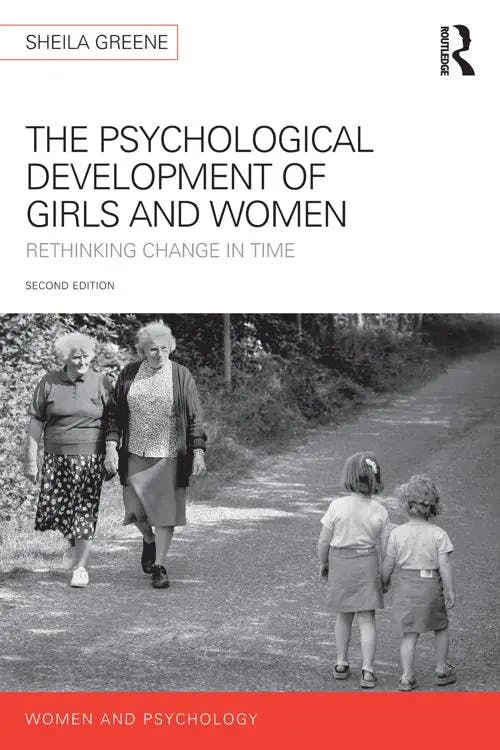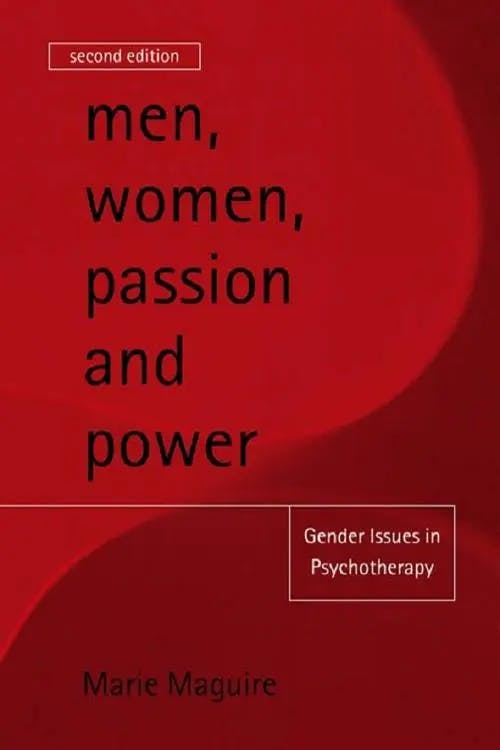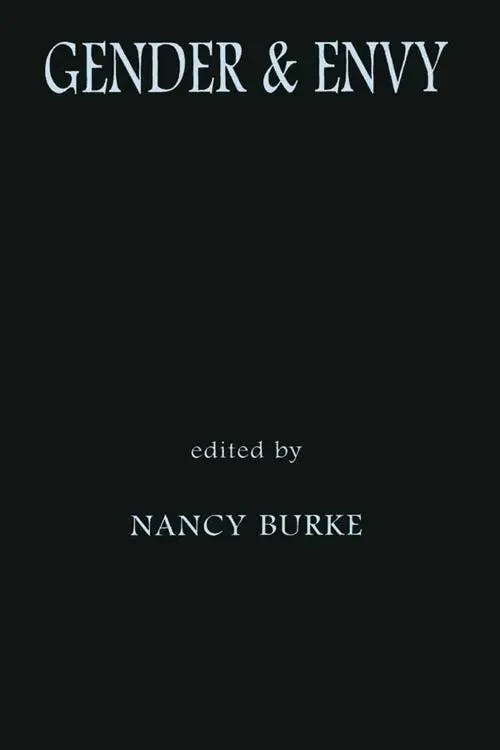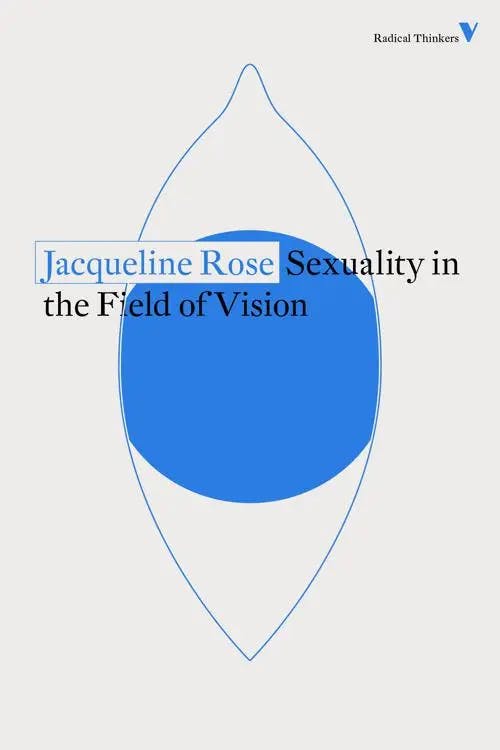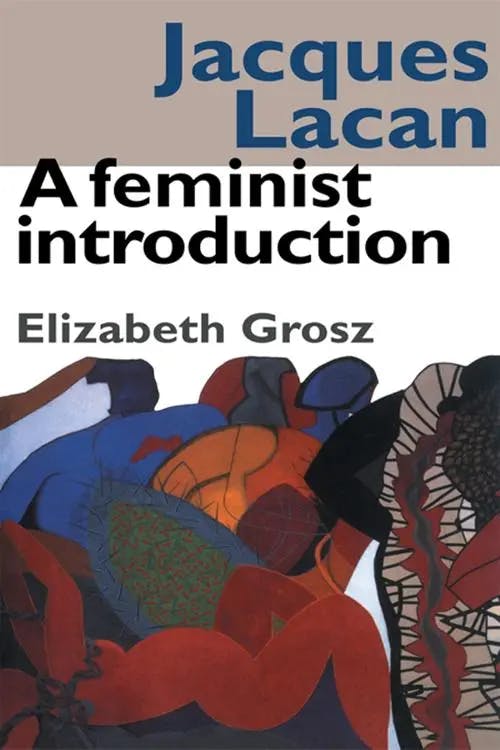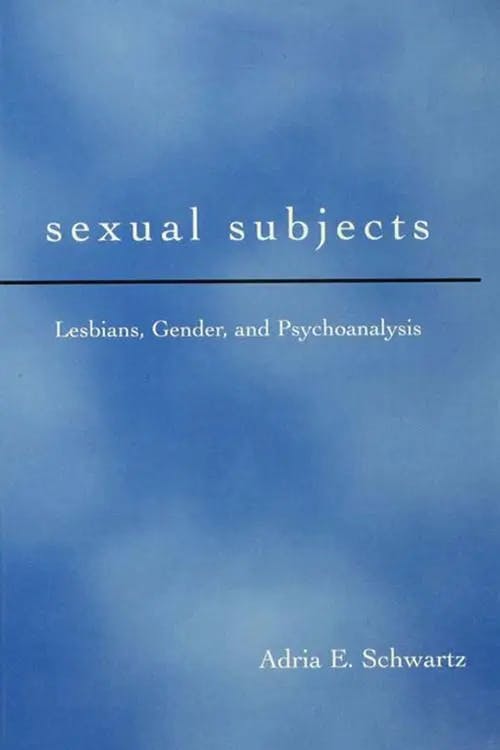What is Psychoanalytic Feminism?
PhD, English Literature (Lancaster University)
Date Published: 14.06.2023,
Last Updated: 09.01.2024
Share this article
Psychoanalytic feminism & the problem with Freud
The psychoanalytic theories of Sigmund Freud (1856–1939) have often been met with criticism from feminists. Prominent writer Simone de Beauvoir, for example, argues that psychoanalysis casts women as the “other”, whilst failing to explain why this is the case. Moreover, she argues that there is a “poverty” of descriptions of the female libido (The Second Sex, 1949). According to Freud, our childhood experiences shape our development and our unconscious desires shape our behavior. Out of all these childhood experiences, Freud argues that the psychosexual stages hold the most weight. For example, if a child does not successfully resolve the phallic stage (characterized by a recognition of the child’s own genitalia, sexual desire to the opposite-gender parent and resentment towards the same-sex parent), their defining personality trait would likely be sexual aggression (Freud, Three Essays on the Theory of Sexuality (1905, [2020]). Though Freud does pay attention to, and differentiate between, female and male psychosexual development, the focus on the importance of male sexuality and “penis envy” have resulted in Freud’s theories being critiqued for their negation of female sexual development.
As psychoanalysis has such a phallocentric focus, it can be difficult to see how feminism could work within such a framework. It is even more incomputable that a theory such as psychoanalytic feminism would emerge during the 1970s, at the height of second-wave feminism which promoted the sexual agency of women — a far cry from Freud’s depiction of the sexually passive woman. Despite the theory’s male-centered and often misogynistic guiding principles, psychoanalytic feminists argue that Freud’s work on the psyche and psychosexual development is key in exploring how our understanding of gender roles is rooted in childhood experiences. More specifically, psychoanalytic feminists suggest that these experiences explain the psychological need for men to dominate women and for women to passively accept this subjugation.
Though psychoanalytic feminism did not really gain traction until the 1970s, the work of psychoanalyst Helene Deutsch in the 1920s extended Freud’s work in order to explain the sexual desires and behaviors she was seeing in her patients. In The Psychoanalysis of Sexual Functions of Women (1924, [2018]), Deutsch writes,
Over and above this, the girl has a double task:
1. She must renounce the masculinity bound up with the clitoris and transform the sadistic trends associated with this into masochistic trends (the passivity drive).
2. In changing from the phallic to the vaginal phase, she must discover the new genital organ. (1924, [2018])
Edited by Paul Roazen
Over and above this, the girl has a double task:
1. She must renounce the masculinity bound up with the clitoris and transform the sadistic trends associated with this into masochistic trends (the passivity drive).
2. In changing from the phallic to the vaginal phase, she must discover the new genital organ. (1924, [2018])
She adds that these “tasks” are “completed only in the sex act” (Deutsch, 1924, [2018]). Deutsch’s work was the beginning of a psychoanalytical approach to female sexual development which had been previously unaccounted for by Freud.
This guide will focus on these compensatory areas devised by psychoanalytic feminists, including female sexuality, the formative role of the mother, and the construction of gender and femininity.
Childhood development and gender roles
Mitchell and prominent psychoanalytic feminists see women’s oppression as rooted in psychic structures which are established in infancy and childhood. Expectations of a mother’s role in the home are deeply ingrained in the children of the household; this, in turn, leads to the perpetuation of gender stereotypes in subsequent generations. Of particular concern to psychoanalytic feminists are the political and social factors which impact the development of both men and women, as well as the production of male dominance.
Like Freud, psychoanalytic feminists acknowledge the importance of early childhood experiences on the psyche. Due to psychoanalytic feminism’s interest in gender-specific issues, this branch of theory suggests that concepts such as what it means to be male or female originate in childhood. Thus, for this group of feminists, gender inequality experienced in childhood leads to the social systems that continue to oppress women. For example, a young boy grows up in a society which treats women as inferior; he may witness his mother taking on a greater proportion of domestic chores, or hear derogatory comments about women. As such, the boy will try to distance himself from the mother, attempting to be masculine as he fears being associated with what he considers to be the weaker gender. As the boy moves into adulthood, he will maintain (according to feminists) this opinion of what it means to be masculine or feminine; when he has his own family and children, he may further instill these beliefs and perpetuate the cycle of inequality. Young girls, likewise, witness these gender inequalities and become resigned to their role, aware of their limited options under the patriarchy. With its focus on the importance of early childhood experiences and the home, psychoanalytic feminism has much in common with Marxist feminism.
Psychosexual development, overbearing mothers, and womb envy
Momism
While discussions of the psychosexual stages make reference to the role of the mother (as with the Oedipus Complex), Freud devotes little time to exploring her impact on a child’s development. This has not gone unnoticed by the descendants of Freud. However, in their new interest in centering the mother, psychoanalytic theorists have depicted her as an overbearing and domineering figure. As Mari Jo Buhle states,
Compared with Freud, who, if anything, underestimated the mother’s role in personality formation, his loyal successors endowed the infant’s first caretaker with extraordinary powers. But unlike the first feminists, who found Freud’s theories lacking precisely for their inattention to motherhood, ego psychologists sought out not motherhood’s beneficent but malignant potential [...] psychoanalysts transformed mothers into the principal agents of children’s disorders and the maladies that plagued the nation. (2009)
Mari Jo Buhle
Compared with Freud, who, if anything, underestimated the mother’s role in personality formation, his loyal successors endowed the infant’s first caretaker with extraordinary powers. But unlike the first feminists, who found Freud’s theories lacking precisely for their inattention to motherhood, ego psychologists sought out not motherhood’s beneficent but malignant potential [...] psychoanalysts transformed mothers into the principal agents of children’s disorders and the maladies that plagued the nation. (2009)
This view of the mother as a malignant figure, set on controlling both her husband and son, can be seen with the emergence of “momism” in America after World War Two. The term “momism” comes from Philip Wylie’s Generation of Vipers (1943, [1996]), which posited that mothers have “debased the nation’s men”. In Wylie’s text, mothers are blamed “for nearly everything, from thumb sucking to premature ejaculation to world war” (Buhle, 2009). Though the role of the mother was finally being discussed within psychoanalysis, her portrayal as a threat simply added to misogynistic stereotypes already ingrained within the field of psychoanalysis. Investigating the roots of momism and its impact on creating unequal power relations is something which psychoanalytic feminism seeks to address. Rebecca Jo Plant, for instance, counters the vitriol of momism by exploring the importance of the maternal figure as indicated through the impact of maternal deprivation (Mom, 2010).
Another key figure in psychoanalytic feminism, Nancy Chodorow, claims that the mother is core in reproducing gender identity in how she acts with her children (The Reproduction of Mothering, 1978, [2023]). Chodorow writes that this association with the mother impacts the daughter’s relationship with her father and her future relationships with men:
The young girl (and the woman she becomes) is willing to deny her father’s limitations (and those of her lover or husband) as long as she feels loved. She is more able to do this because his distance means that she does not really know him. The relationship, then, because of the father’s distance and importance to her, occurs largely as fantasy and idealization, and lacks the grounded reality which a boy’s relation to his mother has. (1978, [2023])
Nancy J. Chodorow
The young girl (and the woman she becomes) is willing to deny her father’s limitations (and those of her lover or husband) as long as she feels loved. She is more able to do this because his distance means that she does not really know him. The relationship, then, because of the father’s distance and importance to her, occurs largely as fantasy and idealization, and lacks the grounded reality which a boy’s relation to his mother has. (1978, [2023])
However, some psychoanalytic feminists find Chodorow’s view too generalized. On Chodorow’s work, Sheila Greene writes,
[...] there are problems with the credibility of Chodorow's analysis. What is the evidence for the proposition that female babies experience a deep and persistent psychic fusion with their mothers?[...] Chodorow does not deal with the mothers who through personality problems or a fraught life situation may fail to provide a secure emotional foundation for their infant of either sex. Identification with the mother is by no means an easy achievement for all girls and women and the desire and capacity to mother is not neatly built into the psyche of all young women. Her analysis is also determinedly heterosexist and allows very little space for family constellations that deviate from the classic nuclear family. (2014)
Sheila Greene
[...] there are problems with the credibility of Chodorow's analysis. What is the evidence for the proposition that female babies experience a deep and persistent psychic fusion with their mothers?[...] Chodorow does not deal with the mothers who through personality problems or a fraught life situation may fail to provide a secure emotional foundation for their infant of either sex. Identification with the mother is by no means an easy achievement for all girls and women and the desire and capacity to mother is not neatly built into the psyche of all young women. Her analysis is also determinedly heterosexist and allows very little space for family constellations that deviate from the classic nuclear family. (2014)
Womb envy versus penis envy
Freud’s theory of penis envy is one which has drawn the criticism of many feminist scholars, for quite clear reasons. Put in its simplest terms, penis envy describes the anxiety young girls feel for not having a penis and marks the shift towards girls competing with their mothers for the attention and affection of their fathers (and subsequent resentment towards the mother whom they suspect of having castrated them). As girls grow into adulthood, Freud suggests this anxiety manifests in the desire to have a baby, preferably a boy. As Marie Maguire explains in Men, Women, Passion and Power (2004),
Freud described how the mother could not adore her daughter as she did her son since the girl could not provide her with masculinity by proxy (1933). This failure to arouse idealised desire in the mother later becomes organised into penis envy, a narcissistic wound which leads women to become highly dependent on the love and esteem of others. Women love in order to be loved, to compensate for their own feelings of inferiority, according to Freud, in contrast to men, who love in order to satisfy their instinctual needs.
Marie Maguire
Freud described how the mother could not adore her daughter as she did her son since the girl could not provide her with masculinity by proxy (1933). This failure to arouse idealised desire in the mother later becomes organised into penis envy, a narcissistic wound which leads women to become highly dependent on the love and esteem of others. Women love in order to be loved, to compensate for their own feelings of inferiority, according to Freud, in contrast to men, who love in order to satisfy their instinctual needs.
Feminists have tended to see this as a problematic view of women’s sexuality, as defined by an anatomical lack. As early as the 1920s, Karen Horney introduced the concept of womb envy to combat Freud’s phallocentric theory. Though Horney did not coin the term “womb envy”, the concept is outlined in her article "The Flight from Womanhood: The Masculinity-Complex in Women as Viewed by Men and by Women” (1926). Here, Horney writes,
from the biological point of view woman has in motherhood, or in the capacity for motherhood, a quite indisputable and by no means negligible physiological superiority. This is most clearly reflected in the unconscious of the male psyche in the boy's intense envy of motherhood. (“The Flight from Womanhood”, Gender and Envy, 2014)
Edited by Nancy Burke
from the biological point of view woman has in motherhood, or in the capacity for motherhood, a quite indisputable and by no means negligible physiological superiority. This is most clearly reflected in the unconscious of the male psyche in the boy's intense envy of motherhood. (“The Flight from Womanhood”, Gender and Envy, 2014)
As such, the traditional gender role of the man as the breadwinner is caused by feelings of inferiority due to their inability to bear children. Conventional roles which allocate the woman to the domestic realm and the man to the public realm of work are, according to psychoanalytic feminists, social constructions that are caused by men’s jealousy of women, rather than women’s psycho-biological drive to bear children to alleviate penis envy.
Female sexual libido
As Alicia Valdés points out, the “Freudian approach to sexuality and women imprinted a stigma upon psychoanalysis that has difficulted the feminist approximation to psychoanalysis” (Towards a Feminist Lacanian Left, 2022). The development of sexuality, or the psychosexual stages, is a key component of psychoanalysis which Freud uses to explain almost all adult behavior, desires, and eccentricities. Freud saw women’s sexuality as practically non-existent, something they were disinterested in due to penis envy. However, psychoanalytic feminists such as Jacqueline Rose identify the importance of Freud’s phallocentric work in highlighting issues with sexual identity within Western society. As Rose argues,
[Psychoanalysts] failed to see that the concept of the phallus in Freud’s account of human sexuality was part of his awareness of the problematic, if not impossible, nature of sexual identity itself. They answered it, therefore, by reference to a pre-given sexual difference aimed at securing that identity for both sexes. In doing so, they lost sight of Freud’s sense that sexual difference is constructed at a price and that it involves subjection to a law which exceeds any natural or biological division. The concept of the phallus stands for that subjection, and for the way in which women are very precisely implicated in its process. (2020)
Jacqueline Rose
[Psychoanalysts] failed to see that the concept of the phallus in Freud’s account of human sexuality was part of his awareness of the problematic, if not impossible, nature of sexual identity itself. They answered it, therefore, by reference to a pre-given sexual difference aimed at securing that identity for both sexes. In doing so, they lost sight of Freud’s sense that sexual difference is constructed at a price and that it involves subjection to a law which exceeds any natural or biological division. The concept of the phallus stands for that subjection, and for the way in which women are very precisely implicated in its process. (2020)
In Feminism and its Discontents (2009), Mari Jo Buhle explains how the incorporation of feminism into psychoanalysis allowed for women to be part of a sexual revolution. Buhle writes,
With Freud’s authority at their service, [feminists] exalted the pleasures of sexual encounters, condemned excessive self-restraint, and made it their business to position women at the forefront of this epochal transformation of both behavior and sensibility.
We cannot, however, fail to mention the influence of another prominent psychoanalyst in discussions of female sexuality: Jacques Lacan (1901–1981). Lacan has divided feminist critics, with some arguing he continues the sexist tradition of psychoanalysis and others arguing his work has been significant in developing our understanding of gender bias. As Elizabeth Grosz writes,
"Many feminists use [Lacan’s] work on human subjectivity to challenge phallocentric knowledges; others are extremely hostile to it, seeing it as elitist, male-dominated, and itself phallocentric."
Grosz adds that,
"[Lacan’s] decentring of the rational, conscious subject (identified with the ego), his undermining of common assumptions about the intentionality or purposiveness of the speaking subject’s ‘rational’ discourses, and his problematizations of the idea of a ‘natural’ sexuality, have helped to free feminist theory of the constraints of a largely metaphysical and implicitly masculine, notion of subjectivity – humanism. He has thus raised the possibility of understanding subjectivity in terms other than those dictated by patriarchal common-sense." (1990, [2002])
Elizabeth Grosz
"Many feminists use [Lacan’s] work on human subjectivity to challenge phallocentric knowledges; others are extremely hostile to it, seeing it as elitist, male-dominated, and itself phallocentric."
Grosz adds that,
"[Lacan’s] decentring of the rational, conscious subject (identified with the ego), his undermining of common assumptions about the intentionality or purposiveness of the speaking subject’s ‘rational’ discourses, and his problematizations of the idea of a ‘natural’ sexuality, have helped to free feminist theory of the constraints of a largely metaphysical and implicitly masculine, notion of subjectivity – humanism. He has thus raised the possibility of understanding subjectivity in terms other than those dictated by patriarchal common-sense." (1990, [2002])
Other critics such as Luce Irigaray argue that Lacan’s interpretation of female sexuality has hindered feminist discourses. In her seminal Speculum of the Other Woman (1985), Luce Irigaray argues that female sexuality is largely misunderstood as it is continually viewed through a masculine perspective.
Irigaray has written extensively on female sexuality, reframing it outside of the male perspective. In particular, Irigaray focuses on women’s autoeroticism — their ability to feel pleasure without the need of a second person, as well as their ability to find pleasure in alternative forms.
Irigaray argues,
[A woman] experiences pleasure almost everywhere […] one can say that the geography of her pleasure is much more diversified, more multiple in its differences, more complex, more subtle than is imagined. (This Sex Which is Not One, 1985)
As Maguire expands upon in Men, Women, Passion and Power,
When Irigaray describes some typical female erotic pleasures [...] it is startlingly clear that such experiences are rarely if ever referred to in psychoanalytic literature. Instead we hear much about the power of the penetrating penis, and the smothering potential of the womb. (2004)
In Sexuality (2003), Celia Harding notes that female sexuality is contingent upon both psychological and cultural factors, as cultural factors become “inscribed in the psyche”. This understanding, Harding proposes, will lead to the viewing of “women as full subjects with their own needs and desires” (2003).
It must be noted, however, that despite the broadening of psychoanalysis to include female sexual desire, the majority of research within this field focuses solely on heterosexual desire. There remains an almost complete absence of discussion of lesbian sexuality from psychoanalytic feminist discourse. As Adria E. Schwartz writes,
lesbians stand outside the laws of patriarchy and compulsory sexuality. In that space, they have rarely been represented as other than damaged or renegade. (2013)
Adria E. Schwartz
lesbians stand outside the laws of patriarchy and compulsory sexuality. In that space, they have rarely been represented as other than damaged or renegade. (2013)
Since Sexual Subjects, however, there have been new explorations of how lesbian sexuality can be understood within a psychoanalytic framework. This includes Judith Glassgold and Suzanne Iasenza’s edited collection Lesbians, Feminism, and Psychoanalysis (2014), and Noreen O'Connor and Joanna Ryan’s work Wild Desires and Mistaken Identities (2018). Though this scholarship indicates a shift towards a more inclusive and broader type of psychoanalytic feminism, these works are still relatively sparse compared to the plethora of studies on heterosexual desire in this field.
Feminist psychoanalysis today
Our understanding of gender is undergoing a transformation in the modern day Western world (see our study guide on Judith Butler & gender performativity). But what does this mean for psychoanalytic feminism, when its theories of socially constructed gender norms are (arguably) still tied to biological essentialism? Would a non-binary person, for example, experience womb envy? Or how do we understand the role of the mother in a society where prescribed gender norms are becoming more and more outdated? Psychoanalytic feminism, like all branches of feminism, must adapt in order to reflect the world in which we live and the real lived experiences of women. In her introduction to Psychoanalytic Reflections on a Gender-free Case (2013), Ellen L. K. Toronto writes,
In psychoanalytic discourse since the mid-1980s we have witnessed a sea change in the way we think about women and gender. An orderly world grounded securely in male dominance and centered on male sexual desire has been dismantled [...] gender itself has been deconstructed and the restrictive features of a binary gender distinction acknowledged. The limiting facets of traditional gender stereotypes have been identified. Fitting the self into “male” or “female” often requires a disavowal of aspects of one's personality that are not deemed appropriate within significant familial relationships or by the culture at large.
Edited by Ellen L. K. Toronto et al.
In psychoanalytic discourse since the mid-1980s we have witnessed a sea change in the way we think about women and gender. An orderly world grounded securely in male dominance and centered on male sexual desire has been dismantled [...] gender itself has been deconstructed and the restrictive features of a binary gender distinction acknowledged. The limiting facets of traditional gender stereotypes have been identified. Fitting the self into “male” or “female” often requires a disavowal of aspects of one's personality that are not deemed appropriate within significant familial relationships or by the culture at large.
Toronto goes on to explain that we must still acknowledge the “reality of gender stereotypes” that continue to shape us and the societies we live in today.
More recently, the collection of essays Psychoanalysis, Gender, and Sexualities (2022) looks at the intersection between psychoanalytic feminism and transgender discourses, exploring core psychoanalytic concepts such as psychosexual development from Freud to Lacan. These essays highlight the continued importance of psychoanalytic feminism in a world which challenges normative ideas surrounding gender, identity, and sexuality, contextualizing these discussions within modern day issues such as sexual harassment following the #MeToo movement.
Despite the controversy surrounding Freud’s original theory of psychoanalysis, it is clear that there is much to be garnered for feminists in this area. It is particularly telling that this branch of feminism has persisted from the 1920s until today. Moreover, psychoanalytic feminism has prompted (and helped to sustain) discussions of the female libido, which arguably remains taboo even in Western culture today.
Further psychoanalytic feminism reading on Perlego
- Between Feminism and Psychoanalysis - Brennan, T. (2002)
- Juliet Mitchell and the Lateral Axis: Twenty-First-Century Psychoanalysis and Feminism - Duschinsky, R and Walker, S. (2015)
- Thinking Fragments: Psychoanalysis, Feminism, and Postmodernism in the Contemporary West - Flax, J. (1990, [2023])
- Fratriarchy: The Sibling Trauma and the Law of the Mother - Mitchell, J. (2023)
- Penis Envy and Other Bad Feelings: The Emotional Costs of Everyday Life - Ruti, M. (2018)
What is psychoanalytic feminism?
How does psychoanalytic feminism differ from psychoanalytic theory?
Who are key thinkers in psychoanalytic feminism?
Bibliography
Buhle, M. J. (2019) Feminism and Its Discontents: A Century of Struggle with Psychoanalysis. Harvard University Press. Available at:
Chasseguet-Smirgel, J. (2018) Female Sexuality: New Psychoanalytic Views. Routledge. Available at: https://www.perlego.com/book/1508174/female-sexuality-new-psychoanalytic-views-pdf
Chodorow, N. J. (2023) The Reproduction of Mothering: Psychoanalysis and the Sociology of Gender, Updated Edition. University of California Press. Available at:
Code, L. (2002) Encyclopedia of Feminist Theories. Routledge. Available at:
https://www.perlego.com/book/1699150/encyclopedia-of-feminist-theories-pdf
de Beauvoir, S. (2010) The Second Sex. Penguin. Available at:
https://www.penguin.co.uk/books/360348/the-second-sex-by-simone-de-beauvoir/9780099595731
Deutsch, H (2018) The Psychoanalysis of Sexual Functions of Women. Edited by P. Roazen. Routledge. Available at:
https://www.perlego.com/book/1598036/the-psychoanalysis-of-sexual-functions-of-women-pdf
Freud, S. (1905, [2020]) Three Essays on the Theory of Sexuality. Ale. Mar. Available at: https://www.perlego.com/book/2644990/three-essays-on-the-theory-of-sexuality-pdf
Fuss, D. (2013) Identification Papers: Readings on Psychoanalysis, Sexuality, and Culture. Routledge. Available at:
Gherovici, P. & M. Steinkoler (eds) (2022) Psychoanalysis, Gender, and Sexualities: From Feminism to Trans*. Routledge. Available at:
Glassgold, J. & Iasenza, S (eds) (2014) Lesbians, Feminism, and Psychoanalysis: The Second Wave. Routledge. Available at:
https://www.perlego.com/book/1662877/lesbians-feminism-and-psychoanalysis-the-second-wave-pdf
Greene, S. (2014) The Psychological Development of Girls and Women: Rethinking Change in Time. Routledge. Available at: https://www.perlego.com/book/1561388/the-psychological-development-of-girls-and-women-rethinking-change-in-time-pdf
Grosz, E. (1990, [2002]) Jacques Lacan: A Feminist Introduction. Routledge. Available at: https://www.perlego.com/book/1620222/jacques-lacan-a-feminist-introduction-pdf
Harding, C. (2003) Sexuality: Psychoanalytic Perspectives. Routledge. Available at:
https://www.perlego.com/book/1619238/sexuality-psychoanalytic-perspectives-pdf
Horney, K. (2014) “The Flight from Womanhood: The Masculinity-Complex in Women as Viewed by Men and by Women” in N. Burke (ed) Gender and Envy. Routledge. Available at: https://www.perlego.com/book/1555165/gender-and-envy-pdf
Irigaray, L. (1985) Speculum of the Other Woman. Cornell University Press. Available at:
https://www.cornellpress.cornell.edu/book/9780801416637/speculum-of-the-other-woman/#bookTabs=1
Irigaray, L. (1985) This Sex Which is Not One. Cornell University Press. Available at:
https://www.cornellpress.cornell.edu/book/9780801415463/this-sex-which-is-not-one/#bookTabs=1
Maguire, M. (2004) Men, Women, Passion and Power: Gender Issues in Psychotherapy. Routledge. Available at:
https://www.perlego.com/book/1618248/men-women-passion-and-power-gender-issues-in-psychotherapy-pdf
Minsky, R. (2014) Psychoanalysis and Gender: An Introductory Reader. Routledge. Available at:
https://www.perlego.com/book/1616842/psychoanalysis-and-gender-an-introductory-reader-pdf
Mitchell, J. (2000) Psychoanalysis and Feminism. Basic Books.
O'Connor, N. & J. Ryan. (2018) Wild Desires and Mistaken Identities: Lesbianism and Psychoanalysis. Routledge. Available at:
Plant, R. J. (2010) Mom: The Transformation of Motherhood in Modern America. University of Chicago Press. Available at:
https://www.perlego.com/book/1852069/mom-the-transformation-of-motherhood-in-modern-america-pdf
Rose, J. (2020) Sexuality in the Field of Vision. Verso. Available at:
https://www.perlego.com/book/1841606/sexuality-in-the-field-of-vision-pdf
Schwartz, A. E. (2013) Sexual Subjects: Lesbians, Gender and Psychoanalysis. Routledge. Available at:
https://www.perlego.com/book/1606645/sexual-subjects-lesbians-gender-and-psychoanalysis-pdf
Toronto, E. L. K. et al. (eds.) (2013) Psychoanalytic Reflections on a Gender-free Case. Routledge. Available at:
Valdés, A. (2002) Toward a Feminist Lacanian Left: Psychoanalytic Theory and Intersectional Politics. Routledge. Available at:
Wylie, P. (1996) Generation of Vipers. Dalkey Archive Press. Available at:
https://www.perlego.com/book/2787741/generation-of-vipers-pdf
PhD, English Literature (Lancaster University)
Sophie Raine has a PhD from Lancaster University. Her work focuses on penny dreadfuls and urban spaces. Her previous publications have been featured in VPFA (2019; 2022) and the Palgrave Handbook for Steam Age Gothic (2021) and her co-edited collection Penny Dreadfuls and the Gothic was released in 2023 with University of Wales Press.

